So that later on the withdrawn thread patterns are effective in the respective motifs, one should place motifs symmetrically on an axis of the fabric weave – always on the straight of grain or on the bias.
An embroidery becomes superb when the chosen filling pattern harmoniously matches the shape of the motif, as the picture below shows.
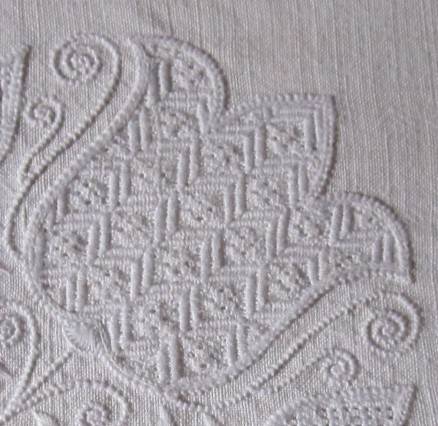
When the embroiderer does not take care to match filling patterns to the motif shape, the results are not pleasing, as the tulip below demonstrates.
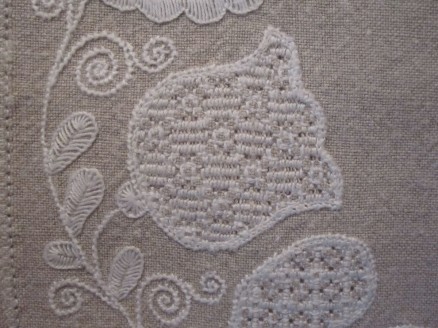
For areas where it is not possible to place the motifs on the straight of grain or on the bias, it is best to use circles or asymmetrical shapes.
To further illustrate the point, please look again at the designs already presented. The blue lines mark the straight of grain, the red lines mark the bias.
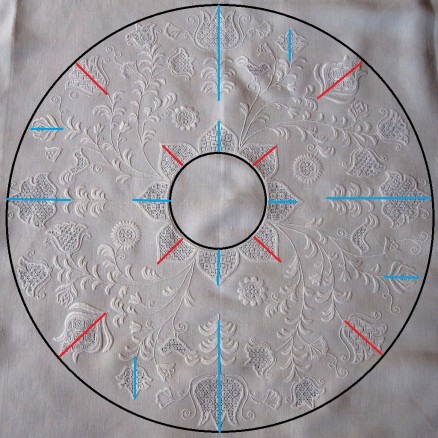
Mrs. Thielmann respected this designing rule for all elements – only two tulips each quarter did not fit this rule exactly (but even they are very nearly placed on the straight of grain).
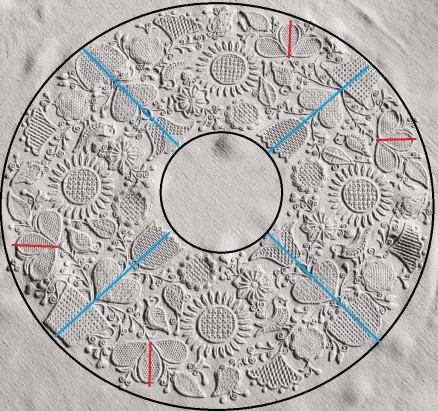
Mrs. Schneider respected this designing rule for the main figures, and very skillfully a large part of the remaining area is filled with different circles and asymmetrical figures. (Regarding the few symmetrical shapes not placed on the straight of grain or on the bias, it is not noticeable because the motifs were filled with patterns of the early Schwalm whitework which are surface embellishment and are not restricted by the grain of the fabric threads.)
to be continued
previous part
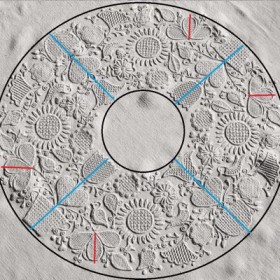


This is so beautiful!!